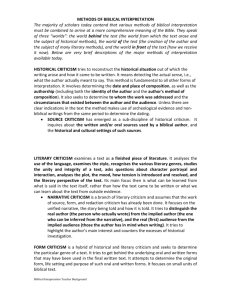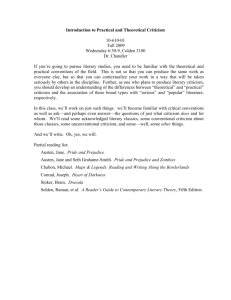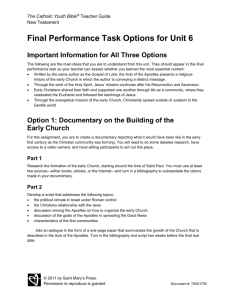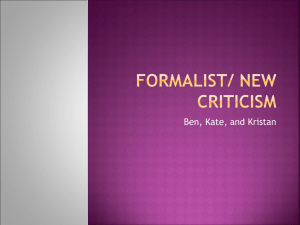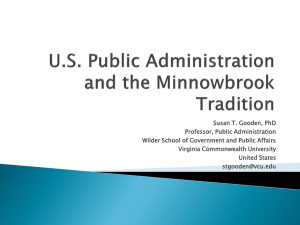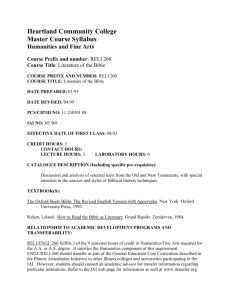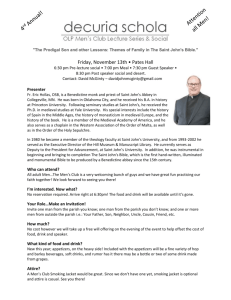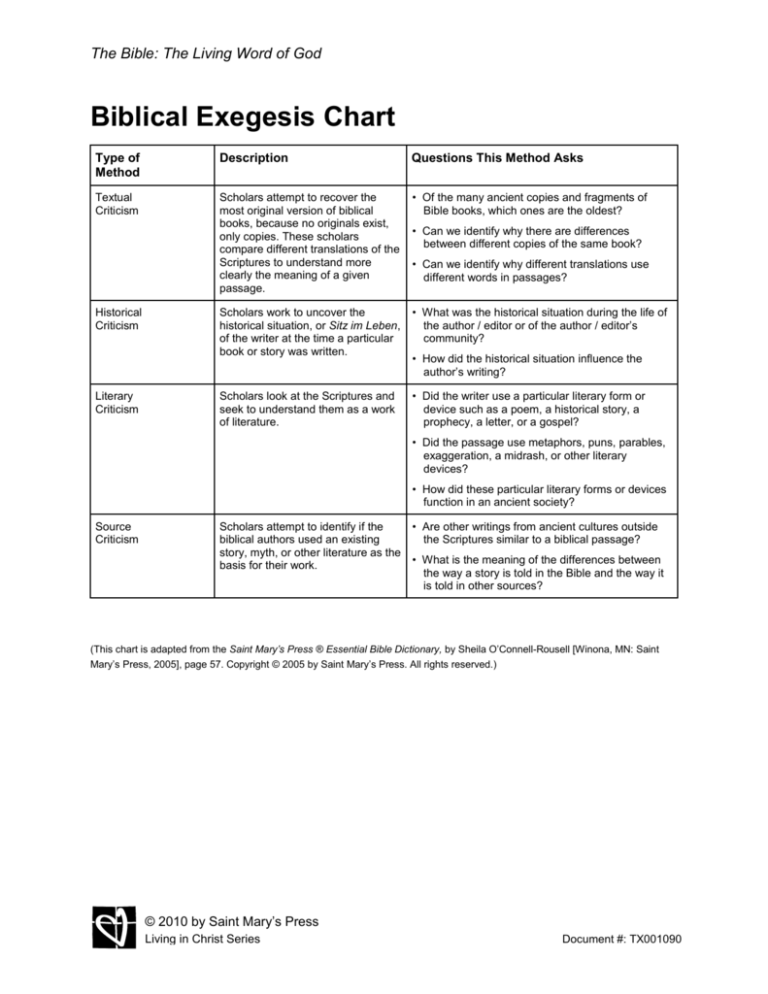
The Bible: The Living Word of God
Biblical Exegesis Chart
Type of
Method
Description
Questions This Method Asks
Textual
Criticism
Scholars attempt to recover the
most original version of biblical
books, because no originals exist,
only copies. These scholars
compare different translations of the
Scriptures to understand more
clearly the meaning of a given
passage.
• Of the many ancient copies and fragments of
Bible books, which ones are the oldest?
Scholars work to uncover the
historical situation, or Sitz im Leben,
of the writer at the time a particular
book or story was written.
• What was the historical situation during the life of
the author / editor or of the author / editor’s
community?
Scholars look at the Scriptures and
seek to understand them as a work
of literature.
• Did the writer use a particular literary form or
device such as a poem, a historical story, a
prophecy, a letter, or a gospel?
Historical
Criticism
Literary
Criticism
• Can we identify why there are differences
between different copies of the same book?
• Can we identify why different translations use
different words in passages?
• How did the historical situation influence the
author’s writing?
• Did the passage use metaphors, puns, parables,
exaggeration, a midrash, or other literary
devices?
• How did these particular literary forms or devices
function in an ancient society?
Source
Criticism
Scholars attempt to identify if the
• Are other writings from ancient cultures outside
biblical authors used an existing
the Scriptures similar to a biblical passage?
story, myth, or other literature as the
• What is the meaning of the differences between
basis for their work.
the way a story is told in the Bible and the way it
is told in other sources?
(This chart is adapted from the Saint Mary’s Press ® Essential Bible Dictionary, by Sheila O’Connell-Rousell [Winona, MN: Saint
Mary’s Press, 2005], page 57. Copyright © 2005 by Saint Mary’s Press. All rights reserved.)
© 2010 by Saint Mary’s Press
Living in Christ Series
Document #: TX001090




